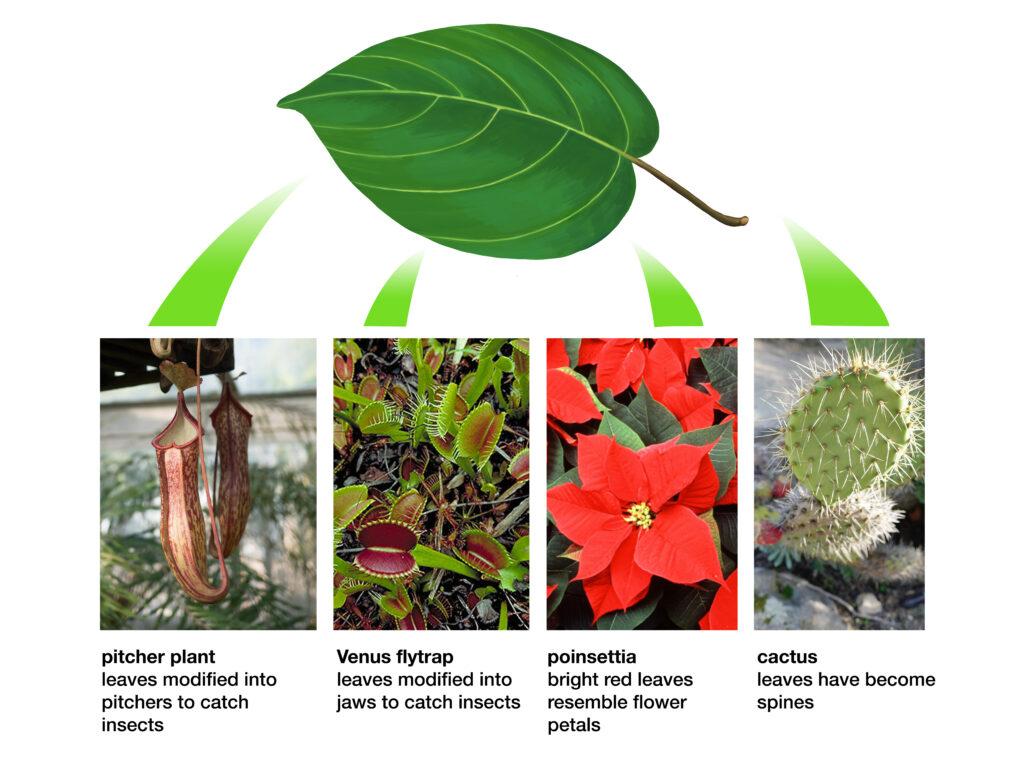If different species share common ancestors, we would expect organisms to share similarities inherited from those ancestors. Features inherited from common ancestors—even if their appearance is quite different in close relatives— are known as homologies. Homologies can be identified by comparing the anatomies of different living things, looking at cellular similarities, studying embryological development, and studying vestigial structures within individual organisms. And in fact, wherever we have looked in the living world, biologists have discovered homologies, providing strong evidence of common ancestry.
Sometimes homologies are easy to recognize, for example the forelimbs of cats and dogs. But in other cases, recognizing homologies can be more difficult. For example, in the following photos of plants, the leaves are quite different from each other and from “normal” leaves.
Careful study reveals that these structures are all homologous to one another and derive from a common ancestral leaf. For example, in the poinsettia, this is particularly clear: the “petals” develop in the same way that leaves do and, in their mature form, have the same pattern of veins as the plant’s green leaves do. Each of the leaves shown above has been modified through evolution to have a different shape and serve a different function. The pitcher plant and Venus’ flytrap use leaves to trap and digest insects. The bright red leaves of the poinsettia look like flower petals. The cactus leaves are modified into small spines, which reduce water loss and provide protection from herbivores.
On the next pages, we’ll provide examples of different sorts of homologies:
Reviewed and updated, June 2020.

